Earthwatch Institute offers 20 trips/accommodations
Dolphins of Greece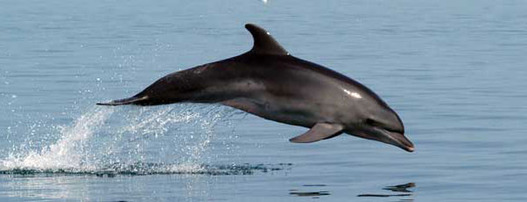
|

Dolphins of Greece
Vonitsa, Greece
for
8 Days • from $2,495* per person
Provider: Earthwatch Institute (1 testimonial) In the waters of Ionian Greece, within sight of landmarks of ancient Hellenic history, bottlenose dolphins congregate in unusually high numbers. The nutrient-rich waters of the Gulf sustain a rich biodiversity where charismatic animals--including sea turtles and a variety of birds--can be easily encountered. Bottlenose dolphins in the Amvrakikos Gulf are threatened by human activities bringing about ecosystem change. Scientists who monitor these dolphins have been able to identify most individuals and have estimated that 150 dolphins live in the… more |
|
||||||||||||
Mountain Waters of the Czech Republic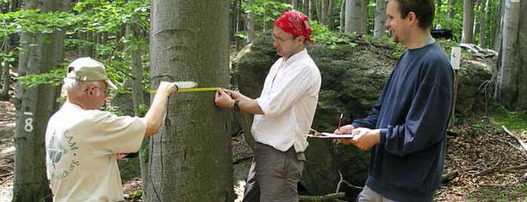
|

Mountain Waters of the Czech Republic
Prague, Czech Republic
for
15 Days • from $2,695* per person
Provider: Earthwatch Institute (1 testimonial) By the time the Eastern Bloc collapsed in 1989, acid rain from coal-fired power plants from countries to the west had already damaged more than two-thirds of these forested headwaters. Forests were dying, water quality was diminished, and mountain streams had been without fish for 40 years. Now, 17 years later, conditions are improving. Sulfur deposition has dropped and forestry practices have improved. Mountain ecosystems, streams, and lakes are recovering. Researchers Dr. Josef Krecek and Zuzana Horicka started working with… more |
|
||||||||||||
Fort Arbeia and the Roman Empire in Britain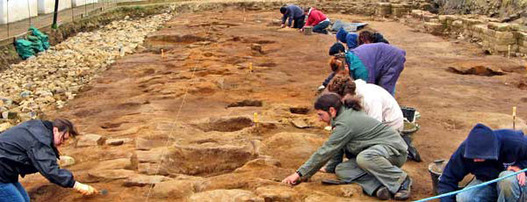
|

Fort Arbeia and the Roman Empire in Britain
South Shields Roman Fort, England
for
7 Days • from $1,495* per person
Provider: Earthwatch Institute (1 testimonial) Two millennia ago, the Roman Empire stretched all the way to northern England, which the Romans considered the very edge of civilization—and perhaps the world. Arbeia, the Roman fort overlooking the river and harbour from Lawe Top, became part of one of the largest and busiest supply depots in the northern Roman Empire, as it was less than four miles from Hadrian’s Wall, which the Empire built to mark its northern boundary and protect its settlements from the region’s native… more |
|
||||||||||||
Climate Change at the Arctic's Edge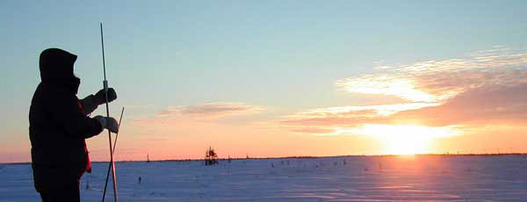
|

Climate Change at the Arctic's Edge
Churchill Northern Studies Center, Arctic
for
10 Days • from $2,995* per person
Provider: Earthwatch Institute (1 testimonial) Global warming is most dramatically visible at the edge of the Arctic, where peatlands run in a broad strip around the globe. These wetlands contain as much as 20% of the world’s carbon, usually locked in permafrost. But as the permafrost thaws, carbon dioxide and methane — the most pernicious greenhouse gases — may be released, which in turn could increase the rate of global warming, with devastating implications for the planet. What happens to the peat here will not… more |
|
||||||||||||
Amazon Riverboat Exploration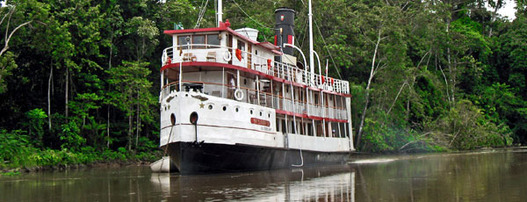
|

Amazon Riverboat Exploration
Iquitos, Peru
for
8 Days • from $2,695* per person
Provider: Earthwatch Institute (1 testimonial) The vast, relatively untouched Amazonian forests of northeastern Peru harbor an incredible diversity of wildlife. Pink river dolphins and caimans still swim these waters, while extraordinary birds fly through the canopy. Uakari monkeys abound along the Yavari River and manatees swim in the lakes of Samiria. Rare giant river otters can sometimes be seen hunting and playing in area lakes and rivers. In this remote and isolated region of the Amazon, scientists Dr. Richard Bodmer, Tula Fang, and Pablo Puertas… more |
|
||||||||||||
Climate Change and Caterpillars in Ecuador
|

Climate Change and Caterpillars in Ecuador
Quito, Ecuador
for
11 Days • Contact provider for price
Provider: Earthwatch Institute (1 testimonial) Perched on the eastern slope of the Andes above the Amazon basin, the cloud forest of Ecuador hosts thousands of different caterpillar species, and an equally impressive diversity of plants. Caterpillars in Ecuador and elsewhere have a variety of strategies designed to break through plant defenses and protect against parasites and predators. Whether they grow stinging "hairs," develop immunity to specific plant toxins, or frantically wiggle their way to freedom, caterpillars must figure out how to keep the food coming… more |
|
||||||||||||
Carnivores of Madagascar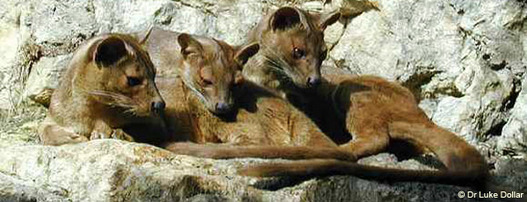
|

Carnivores of Madagascar
Mahajanga, Madagascar
for
13 Days • from $2,595* per person
Provider: Earthwatch Institute (1 testimonial) Madagascar’s lemurs are famous the world over, but their rare predator the fosa remains a mystery. One of the most ferocious predators on Earth, the cat-like fosa is actually a large relative of the civets. Seven of the eight civet-like carnivores that stalk Madagascar's forests are found nowhere else in the world. The habits and population status of many civets are virtually unknown. Dr Luke Dollar and Rahajanirina Léon Pierrot, working with veterinarian Dr Julie Pomerantz, are monitoring carnivore populations… more |
|
||||||||||||
Cheetah Conservation in Namibia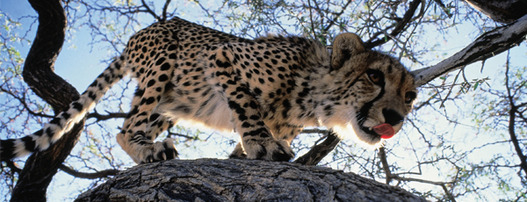
|

Cheetah Conservation in Namibia
Otjiwarongo, Namibia
for
15 Days • from $4,595* per person
Provider: Earthwatch Institute (1 testimonial) Cheetahs can run 110 kilometers per hour, yet they can't run away from habitat loss, a reduced gene pool, and conflicts with humans and their livestock. Namibia is home to the world's largest remaining cheetah population, with 90 percent of its cheetahs living on livestock farmlands where conflict with humans is the greatest threat. The survival of the Namibian cheetah lies in the hands of about 1,000 commercial farmers, who generally view this predator as a threat to their livelihoods.… more |
|
||||||||||||
Coral and Coastal Ecology of the Seychelles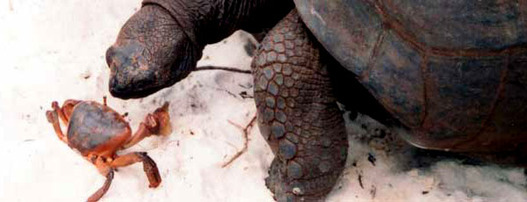
|

Coral and Coastal Ecology of the Seychelles
Interisland Quay, Mahe Island, Seychelles
for
123 Days • from $2,995* per person
Provider: Earthwatch Institute (1 testimonial) In 1979, Curieuse Island and its surrounding waters were declared a Marine National Park by the Seychelles in order to protect the native wildlife. Today it is home to a diverse array of habitats, ranging from open grasslands to tall lush woodland to a species-rich coastal ecosystem. Your help in studying the reef and the coastal ecosystem will allow researchers to provide invaluable data to the Seychelles government, to the local community, and to conservation groups, engaging them in promoting… more |
|
||||||||||||
Meerkats of the South African Kalahari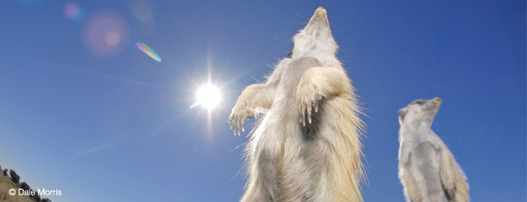
|

Meerkats of the South African Kalahari
Kuruman River Reserve, South Africa
for
14 Days • from $3,895* per person
Provider: Earthwatch Institute (1 testimonial) Cooperative breeding, in which animals help others raise their young, occurs in many animal species. It appears to be common in the Kalahari Desert, where extreme conditions have molded cooperative breeding in meerkats, those inimitable relatives of mongooses that stand upright to peer across the landscape. The explanation for this behavior has been that related animals benefit by having shared genes passed on in the young they helped nurture. However, renowned behavioral ecologist Dr. Timothy Clutton-Brock and his colleague Dr.… more |
|
||||||||||||
Saving Kenya’s Black Rhinos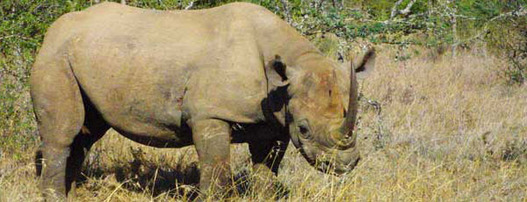
|

Saving Kenya’s Black Rhinos
Nairobi, Kenya
for
15 Days • from $3,095* per person
Provider: Earthwatch Institute (1 testimonial) In the past 30 years, poaching has reduced Kenya's black rhinoceros population from 20,000 to a mere 400. Fenced-in, scout-patrolled sanctuaries like this 100-square-kilometer reserve have kept rhinos on the map, even bringing their number back to about 500. But in the wake of this success, new concerns have arisen: potential competition with giraffes and elephants, calf predation by hyenas and lions, even having too many rhinos in enclosed reserves. Only a close examination of interactions between these competing large… more |
|
||||||||||||
South Africa's Scavenger Species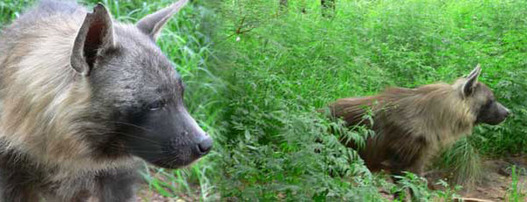
|

South Africa's Scavenger Species
Johannesburg, South Africa
for
12 Days • from $3,295* per person
Provider: Earthwatch Institute (1 testimonial) Despite their traditional bad reputation, brown hyaenas are actually social mammals that live in tight-knit clans, where members will even help suckle each other's young. Like other carnivores and large scavengers, brown hyaenas are suffering from shrinking habitats and conflict with humans. The land around protected areas is being increasingly developed, and hyaenas that venture into neighboring farmland and game ranches are at risk of being poisoned, trapped, or hunted down as pests. Finding a way to live peacefully on… more |
|
||||||||||||
South African Penguins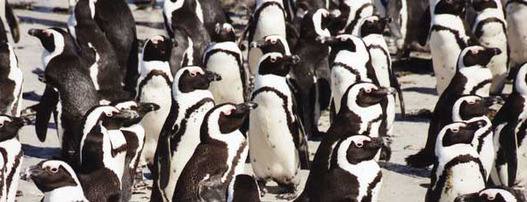
|

South African Penguins
Cape Town, South Africa
for
12 Days • from $2,995* per person
Provider: Earthwatch Institute (1 testimonial) Infamous as Nelson Mandela's former incarceration site, this island is a hotspot for seabird biodiversity, including threatened bank cormorants, African black oystercatchers, and 15,000 African penguins. It also lies in the middle of major shipping lanes, and the risk of oil spills to local seabirds has been well documented. The worst oil spill occurred in 2000, when 13,000 penguins were "oiled" on Robben Island alone. Most of these were cleaned and released, but the future of this penguin population (reduced… more |
|
||||||||||||
Managing Mangroves and Capturing Carbon in Kenyan Communities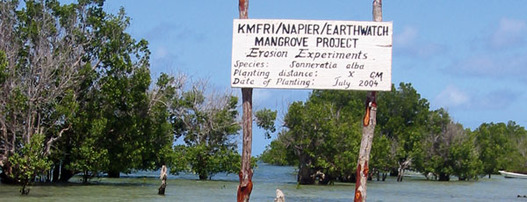
|

Managing Mangroves and Capturing Carbon in Kenyan Communities
Mombasa, Kenya
for
11 Days • from $2,495* per person
Provider: Earthwatch Institute (1 testimonial) Mangrove forests are among the most productive wetland ecosystems on Earth. These tropical coastal woodlands provide crucial habitat, protect coral reefs from sedimentation, and, as demonstrated by the tsunami of 2004, play a critical role in protecting tropical coastlines. They are also one of the most threatened habitats. Historically, mangrove forests lined three-quarters of all tropical and subtropical coasts. Today, less than half of these forests remain, and an estimated two percent more are degraded each year for firewood, building… more |
|
||||||||||||
Climate Change and Caterpillars in Costa Rica
|

Climate Change and Caterpillars in Costa Rica
San Jose, Costa Rica
for
11 Days • from $2,495* per person
Provider: Earthwatch Institute (1 testimonial) Caterpillars have developed an impressive repertoire of defenses to protect themselves from predators and parasites. Some eat plant toxins to keep parasites off, others “bungee-jump” out of harm's way. Understanding why one caterpillar is a diner and the other is dinner is an important part of learning how to conserve forests and other habitats. Working in one of the world's richest tropical rainforests, you can help sort out the tangle of offense and defense in Costa Rica. more |
|
||||||||||||
Wildlife of the Mongolian Steppe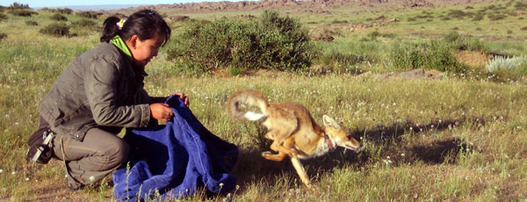
|

Wildlife of the Mongolian Steppe
Ulaanbaatar, Mongolia
for
14 Days • from $3,395* per person
Provider: Earthwatch Institute (1 testimonial) This magnificent region of semi-arid grasslands and rocky outcrops is one of the best hopes for wildlife in central Asia. Argali sheep, lesser kestrels, cinereous vultures, and other animals threatened throughout their range find a stronghold here. Herds of graceful Mongolian gazelles and goitered gazelles roam freely through the reserve. For the past several years, Earthwatch teams have worked to study and conserve the area's wildlife, including the "near-threatened" argali—the largest mountain sheep in the world with huge, curling horns.… more |
|
||||||||||||
Bahamian Reef Survey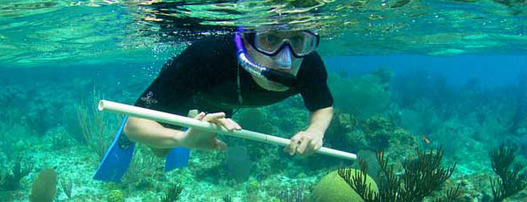
|

Bahamian Reef Survey
San Salvador, Bahamas
for
8 Days • Contact provider for price
Provider: Earthwatch Institute (1 testimonial) Coral reefs are at serious risk due to climate change, coastal development, over fishing, and other environmental stressors. One of the first signs that corals are in trouble is coral bleaching, when algae living within the reef organism fail during environmental stress, leaving the coral colorless and leaving area fish without nutrition. Prolonged bleaching kills coral, with drastic impacts on marine biodiversity, fisheries, tourism, and shore protection—and bleachings are on a dramatic rise worldwide. Coral diseases have also been increasing… more |
|
||||||||||||
Trinidad's Leatherback Sea Turtles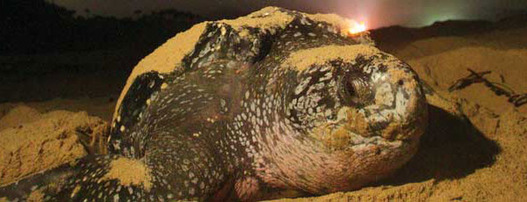
|

Trinidad's Leatherback Sea Turtles
Port of Spain, Trinidad And Tobago
for
12 Days • from $2,795* per room
Provider: Earthwatch Institute (1 testimonial) This tropical island off the coast of Venezuela is known for its vibrant ethnic diversity and rich cultural events. It is also the site of one of the most important nesting beaches for endangered leatherback turtles, enormous reptiles that can weigh a ton and dive deeper than many whales. Each year, more than 2,000 female leatherbacks haul themselves onto Matura Beach to lay their eggs.With leatherback populations declining more quickly than any other large animal in modern history, each turtle… 3 testimonials & more |
|
||||||||||||
Puerto Rico's Rainforest
|

Puerto Rico's Rainforest
San Juan Airport, Puerto Rico
for
10 Days • from $1,995* per person
Provider: Earthwatch Institute (1 testimonial) The World Resources Institute estimates that each year 13.7 million hectares of tropical forest are cut down, with drastic consequences for biodiversity and local economic sustainability. Dr. Mark Nelson and the staff at Las Casas de la Selva are testing ways to harvest rainforest trees by mimicking nature. The project staff cuts long, three-meter-wide slots through the forest, each line separated by 10 meters of intact rainforest, as if a canopy tree had fallen in the rainforest. They plant tree… more |
|
||||||||||||
Climate And Landscape Change In Borneo’s RainforestNational Geographic Tour of a Lifetime 2010/2011 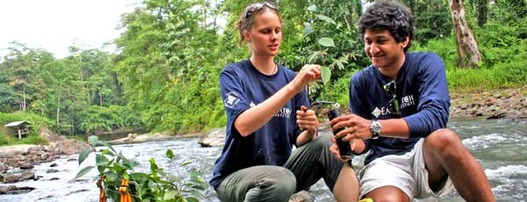
|

Climate And Landscape Change In Borneo’s Rainforest
Sabah, Malaysia
for
10 Days • from $1,995* per person
Provider: Earthwatch Institute (1 testimonial) Over recent decades, Borneo's once pristine rainforests have been degraded by intensive, industrial-scale logging and clearance to make way for plantations. This has threatened the island's rainforest ecosystems and the many plant and animal species they support. The situation is worsened by the lack of scientific knowledge about the ability of the forests to regenerate - especially their resilience to climate change.With the help of Earthwatch volunteers, Dr. Glen Reynolds and his team aim to better understand biodiversity and ecosystem… more |
|
||||||||||||


